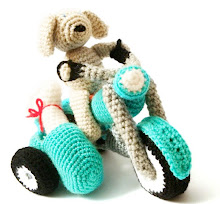In other words, after seeing the result (and observing the problems) of bread no.1, I figured I'd try the same recipe again, slightly varying the parameters and see how that would influence the outcome. This of course is far from being a scientific experiment, because usually when I'm doing bread, it depends of many more factors, such as time of the day or mood.
So, here's what goes into the bread:
400 grams of spelt flour
3 spoons of sugar
2 spoons of yeast
water (for the yeast starting-mix)
honey
Guinness
salt
olive oil
some strong white flour (for working the dough)
After having some success with using Guinness in our bread a while ago (when we still used the bread maker) I really wanted to use it again. In the meantime however I learned that alcohol is making the yeast 'sluggish', so it became clear to me that I cannot substitute water for beer when doing the yeast mix.

Therefore, while the mixture of yeast, sugar and water was starting to bubble, I was mixing 400 gram of wholemeal spelt with a good helping on Guinness and honey, adding salt and oil. So far so good, but of course when bringing the flour mix and the yeast mix together, I ended up with clearly too much liquid!
So, I worked the dough for a few minutes, adding white flour until I got a familiar bread dough consistency. Let it rest for an hour, worked it quickly into shape and let it rest for 20 minutes while the oven was heating up to 210 degree.

Another 20 minutes and the bread was ready. I must say, it wasn't bad, but it didn't grow as expected and with the extra flour added it became a bit heavy...

Now, we fast forward to the next attempt: Same ingredients, but this time I already started with using less 30% less water for the yeast preparation. I also forgot to add salt, but that wasn't on purpose (I just realized that after working the dough, so I sprinkled it with coarse salt before resting, that's where the white spots come from...) However, the biggest difference probably was that I resisted the temptation of adding more white flour, even though of course the dough was initially too wet again. Instead, I was just kneading it more (probably some 10 minutes more), until I felt confident that it could turn out well. Did I say that I'm an optimist?

After approximately 1 1/2 hour of resting I kneaded it again (more than I would usually do after the resting period), put it on the baking tray and let it rest covered for almost another hour. Then it went into the oven as usual.


This time, the bread grew much bigger, got a nice crust and a good moisture in general (even after more than a week it didn't turn hard really). It was also surprisingly soft, but it tastes good. Sometimes it's worth trying the same thing again in order to get a better result!





No comments:
Post a Comment